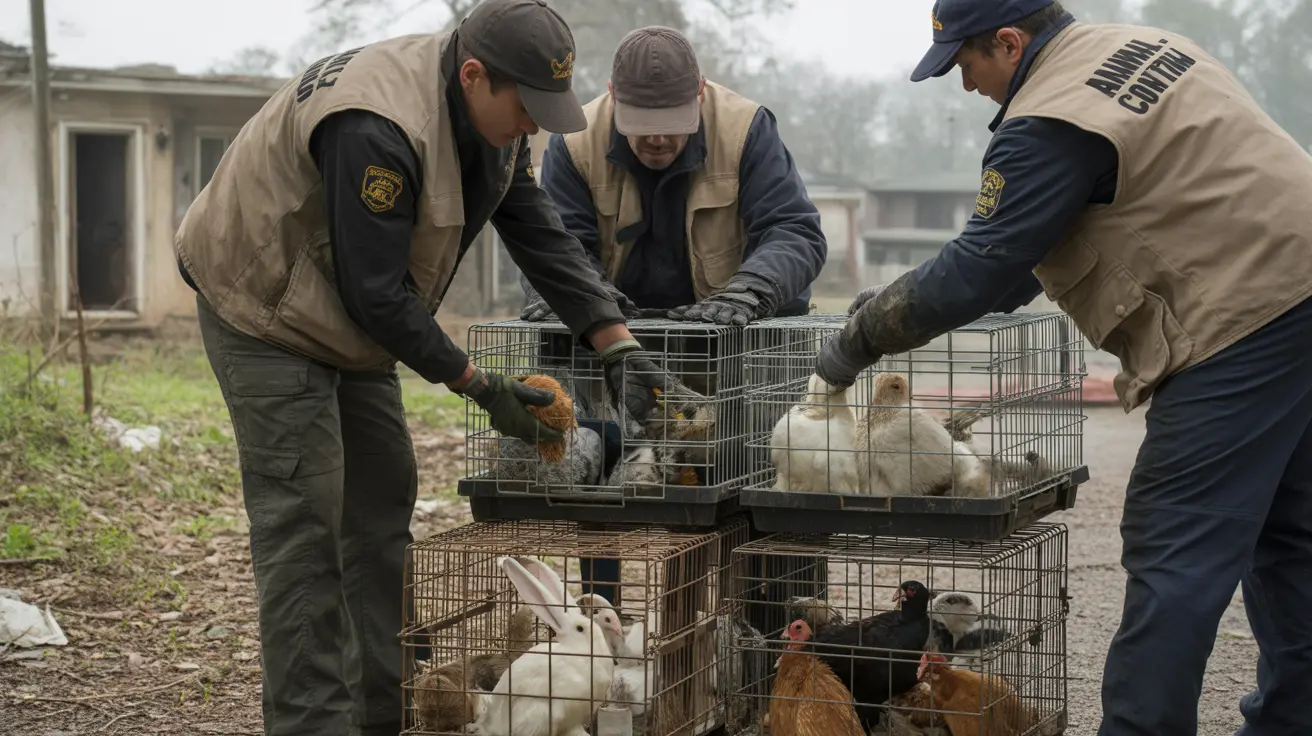A severe case of animal hoarding has been uncovered in Long Island, where authorities discovered more than 200 animals living in deplorable conditions alongside a 95-year-old woman. The incident highlights the critical importance of recognizing animal hoarding signs before situations escalate to dangerous levels for both animals and humans.
Law enforcement officials responded to the scene, where they found numerous animals trapped in unsanitary conditions, demonstrating the devastating impact of unchecked animal hoarding. The elderly resident was found living among the animals, raising serious concerns about both animal welfare and human safety.
Health Risks of Animal Hoarding
The Long Island case exemplifies the severe health hazards associated with animal hoarding situations. When multiple animals are confined in cramped spaces without proper care, both the animals and human residents face significant risks:
- Respiratory issues from accumulated waste
- Potential exposure to zoonotic diseases
- Unsafe living conditions due to structural damage
- Mental and physical health deterioration
Mental Health and Animal Hoarding Connection
Animal hoarding situations often develop gradually and are frequently linked to underlying mental health challenges. While each case is unique, these situations typically involve:
- Complex psychological factors
- Difficulty recognizing the severity of the problem
- Resistance to accepting help or intervention
- Progressive deterioration of living conditions
Animal Welfare in Hoarding Cases
The discovery of multiple species living in substandard conditions underscores the importance of proper animal care standards. In hoarding situations, animals typically suffer from:
- Lack of adequate food and water
- Insufficient veterinary care
- Overcrowding and stress
- Poor sanitation and hygiene
Multi-Species Animal Hoarding Challenges
When multiple species are involved, as in this Long Island case, the complexity of rescue and rehabilitation increases significantly. Each type of animal requires:
- Species-specific care protocols
- Different medical assessments
- Specialized housing requirements
- Unique rehabilitation approaches
Veterinary Care in Hoarding Situations
Professional veterinary intervention becomes crucial in these cases, requiring:
- Immediate health assessments
- Treatment for existing conditions
- Vaccination and parasite control
- Documentation for potential legal proceedings
Frequently Asked Questions
What are the warning signs that someone might be hoarding animals in their home?
Common signs include a large number of animals living in cramped, unsanitary conditions; strong ammonia odors from urine; animals appearing malnourished, injured, or sick; clutter and debris that pose safety hazards; and complaints from neighbors about noise or smell.
How does animal hoarding affect the health of both the animals and the people living there?
Animals often suffer from malnutrition, untreated illnesses, parasites, and stress due to overcrowding. Humans, especially elderly residents, face risks such as respiratory issues from ammonia, potential zoonotic diseases transmitted from animals, injury hazards, and mental health decline.
What steps are involved when authorities rescue animals from a hoarding situation?
Rescues typically include law enforcement and animal welfare coordination to identify and assess all animals, provide urgent veterinary care, remove animals to shelters for treatment and rehabilitation, and offer medical and social support to affected humans.
Conclusion
This Long Island animal hoarding case serves as a crucial reminder of the importance of early intervention and proper animal care. It demonstrates the complex interplay between mental health, animal welfare, and public health concerns. Recognizing the signs of animal hoarding and taking appropriate action can prevent similar situations from developing and ensure both human and animal safety.
For anyone concerned about potential animal hoarding situations in their community, it's essential to reach out to local animal welfare authorities or law enforcement for guidance and support. Early intervention can make a significant difference in preventing these situations from escalating to dangerous levels.






